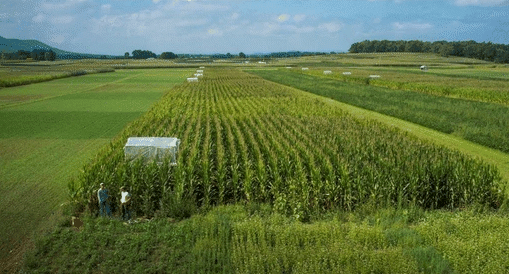
Challenges Involved in Cover Cropping and How to Mitigate them

Cover-cropping crops are grown between the main crop cycles to improve soil health and fertility. They can also suppress weeds and prevent soil erosion. However, cover cropping can sometimes be difficult to implement effectively despite its many benefits. Due to certain challenges, such as competition with main crops for nutrients and water, difficulty arises in establishing cover crops in certain soil and weather conditions.
It is also hard to control the timing and extent of cover crop growth. By understanding these challenges and implementing effective strategies to overcome them, farmers can reap the full benefits of cover cropping. In turn, this helps ensure a successful and sustainable agricultural operation.
Cost
The cost of cover crops and seeds is a significant challenge that farmers face. Cover crops can be expensive to purchase, and some cover crops need specialized seeds. Such seeds are more costly compared to conventional seeds. To minimize the cost, farmers can opt for cover crops that can grow in their area and are affordable. They would also have to invest in the right cultivator so they don’t get blindsided by the background costs.
They can also explore ways to save costs, like rotating the cover crops with their primary crops. Farmers need to plan and include the cost of cover crops in their budget. By considering the cost of cover crops, farmers can make informed decisions on what type of cover yield to plant. They can also search for cost-effective solutions like bulk purchasing or looking for cheaper alternatives. In conclusion, the cost is a significant challenge in cover cropping, but with careful planning, farmers can overcome this.
Timing
Timing cover crop planting correctly can be challenging. Factors such as soil temperature, moisture, and primary crop growth stage must be considered. Late planting can lead to low growth and less weed suppression. Early planting may interfere with the main crop. Choosing the right cover crop species and planting them at the right time helps ensure success.
Farmers should plan carefully and consult with local experts to determine the best planting time. This can involve monitoring the main crop growth and the cover crop to ensure a balanced and successful cover crop system. Proper timing can help maximize the benefits of cover cropping, such as improving soil health, suppressing weeds, and reducing erosion.
Management
Cover cropping involves planting crops between main crops to improve soil health and reduce weeds. Effective management of cover crops requires knowing the right time to plant and integrate them into main crops. Although the timing is critical in cover cropping, planting too early or too late can lead to reduced benefits.
Proper management of cover crops is necessary to maximize the benefits and prevent negative impacts on main crops. Careful planning and attention to detail can help farmers get the most out of cover cropping. However, even with the best management, weather can still play a big role in the success of cover crops. Understanding the challenges in cover cropping and developing strategies to mitigate them is crucial to achieving long-term benefits for soil health and crop productivity.
Knowledge
To effectively implement cover cropping, farmers must understand the different types of cover crops, their growing habits, and the right time to plant them. They should also know how to manage the cover crops to ensure they reach maturity, incorporate them into the soil properly, and select the right cover crops for their specific field conditions.
Good knowledge of the crop rotation schedule, soil health, and weather patterns are also essential in ensuring that cover cropping is successful. Farmers must continuously educate themselves on the latest practices and techniques to get the most out of their cover cropping efforts. They can attend workshops and conferences or consult with experts to gain a deeper understanding of cover cropping and how to mitigate any challenges that may arise.
Weather
For cover crops to be effective, they need to have enough time to grow and develop before being terminated. If the weather turns cold or rainy, it can slow down or even stop growth, reducing the benefits of the cover crop. On the other hand, too much heat can cause the cover crop to mature too quickly and not provide enough benefits.
Therefore, it’s important to monitor the weather conditions regularly and adjust planting or termination timing if necessary. Knowing local weather patterns and long-term forecasts can also help make these decisions. Furthermore, extreme weather conditions such as droughts or heavy rains can also cause damage to the cover crop, reducing its effectiveness. Considering the potential weather challenges and having contingency plans in place can help mitigate the impact of weather on cover cropping.
Conclusion
Cover cropping provides many benefits to farmers, but it also comes with its challenges. However, by managing costs, timing, and crop selection, farmers can overcome these challenges and see success in cover cropping. With proper knowledge and planning, cover cropping can improve soil health, reduce erosion, and increase crop yields. Therefore, investing in cover cropping is worth it for the long-term benefits to the land and future crops.